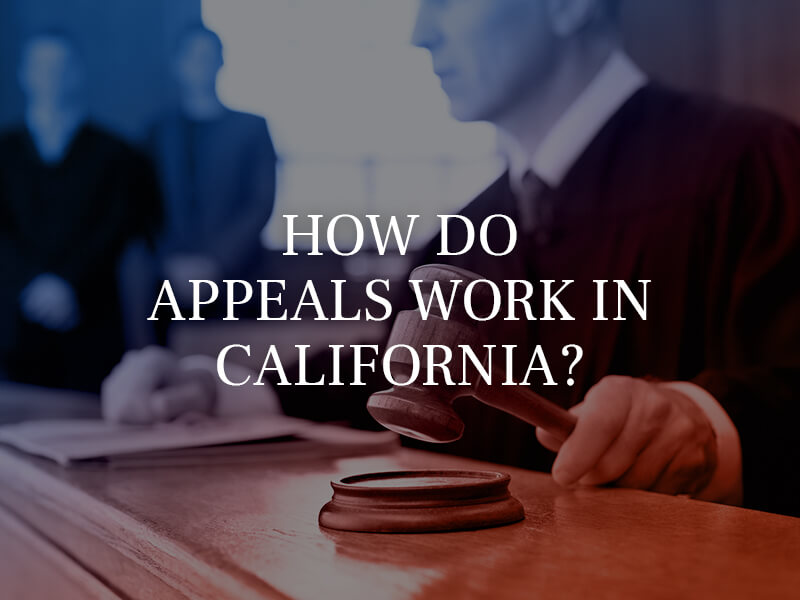How Do Appeals Work In California?
Posted in Criminal Defense on November 19, 2019
Appeals are one of the most important aspects of our criminal justice system. When a person is initially arrested and charged with a crime, they are innocent until proven otherwise by a court of law. Regardless of how a person is convicted, judges can make bad decisions. Juries have been wrong. Prosecutors can act unethically.
Regardless of what happens when a person is found guilty and sentenced, that is not the end of the line. The appeals process makes it possible for a convicted person to get another chance at being found not guilty.
Officially, appeals in California go through the Appellate Division of the Superior Court for state misdemeanor appeals and the California Court of Appeal for felony appeals. The party who files an appeal is referred to as the “appellant.” The party who opposes the appeal is referred to as the “respondent.”
Before explaining the appeals process, it is important to note that the appeals process does not:
- Accept new evidence
- Retry the case
- Hear testimony from witnesses

What is a “Notice of Appeal”?
The courts mentioned above will review the lower court’s proceedings and judicial rulings. They are looking to determine if there were any legal errors that substantially affected the rights of any party involved.
The notice of appeal is the first step in this process. You will have the right to appeal after a guilty conviction. This must be done by filing a “Notice of Appeal” within 30 to 60 days following a guilty verdict.
7 Steps After Filing a Notice of Appeal
After filing a “Notice of Appeal,” the steps are as follows:
- Preparation of court transcripts. Once the notice of appeal has been made, the Superior Court will prepare two transcripts. The first one is the reporter’s transcript from the court reporter who sat in the trial. They will prepare a transcript of everything that was said during the court proceedings. The second transcript is the clerk’s transcript, which will include all other materials used in the court process (exhibits, documents, etc.).
- Appellant’s opening brief. This is the appellant’s first opportunity to explain to the court why they believe they are entitled to appellate relief, including a reversal of the conviction, a new trial, or a new sentence.
- Respondent’s opening brief. The prosecution will then respond on behalf of “The People” and discuss why they disagree with the appellant’s claims.
- Appellant’s reply brief. The appellant can file a second brief to reply to the respondent’s brief. No new issues can be raised at this point.
- Oral argument. This is the opportunity for you or your attorney to argue your case to the Court. These arguments are brief and may last only 10 to 30 minutes.
- Petitioning for rehearing. If the appellant is unsatisfied with the court’s ruling, they have 15 days to file for a rehearing.
- Petition for review. After the Court of Appeal announces its decision, either party may apply to have the case reviewed by the Supreme Court of California. The request for this review must be filed within ten days after the Court of Appeal announces their decision. The Supreme Court does not have to accept the appeal to review the case.
Bail while on appeal
The appellant has the right to a bail hearing pending their appeal. For felony offenses, this is left up to the discretion of the trial court. If the trial court denies bail, you can appeal the issue to the Court of Appeal.
What about federal appeals?
If you were convicted of a federal crime and pursuing an appeal, you will do so through the US Court of Appeal for the Ninth Circuit and then on to the Supreme Court of the United States. These courts operate on different rules than California appeals courts.
Speak to a local criminal defense attorney if you have questions about appealing a charge or sentence.

